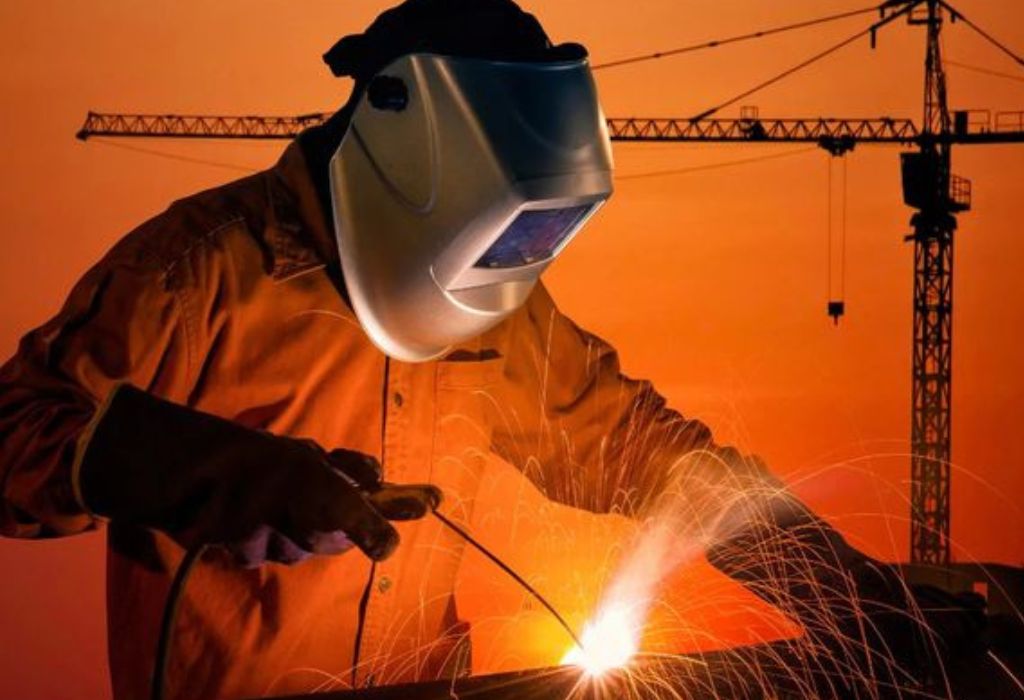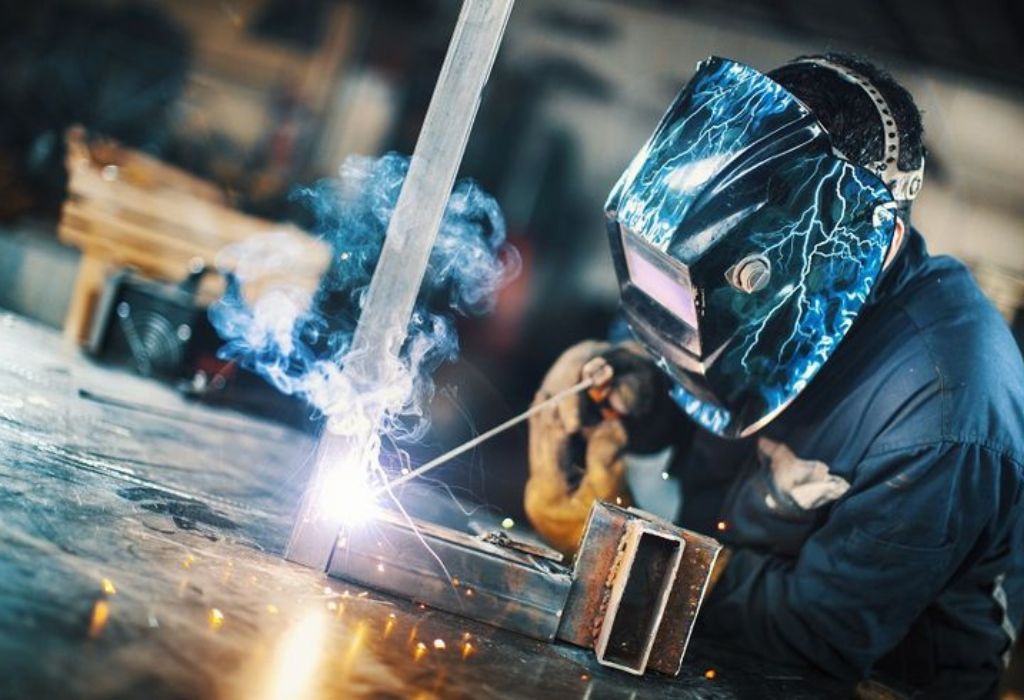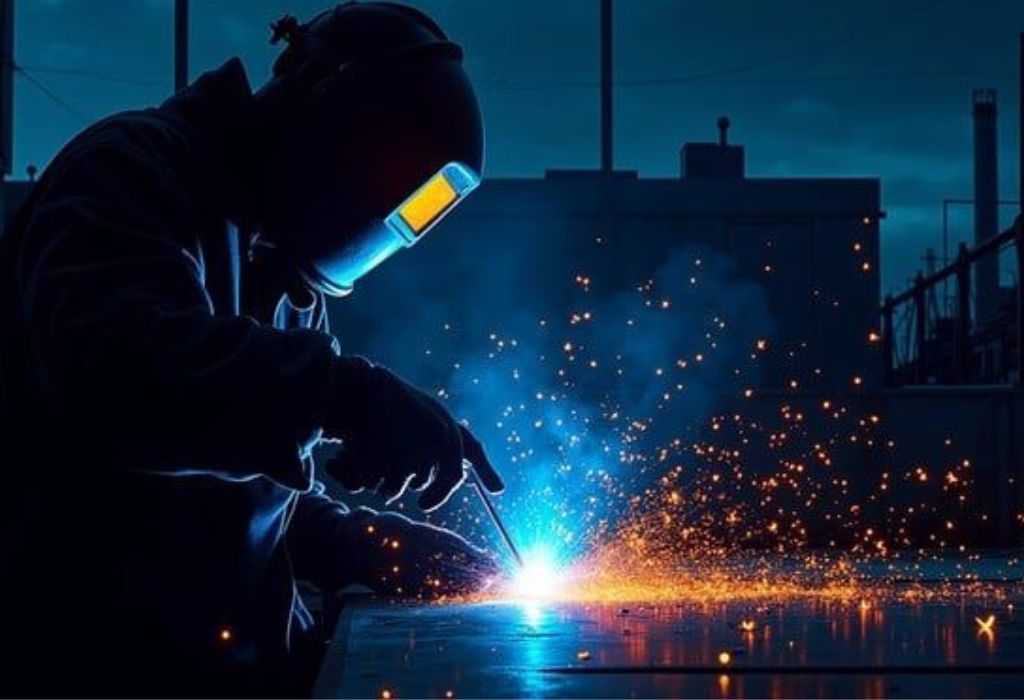A maintenance crew descends into a damp steel tank, welders in hand, beams echoing in the enclosed space. One veteran taps the welder and points to a small light marked “VRD,” cautioning the newcomer not to disable it. That small light represents one of the most important safety innovations in modern welding — the Voltage Reduction Device.
Electric shock is a real threat in welding. According to safety studies, welders working in humid or confined spaces face significantly higher risk of injury from live electrodes or cables. One MSHA technical report explains that reducing open-circuit voltage (OCV) during idle periods can drastically cut current through a human body (source).
This guide explains what is VRD in welding machine, how it works, why it matters, and how it protects welders in demanding environments. Whether you’re a shop owner or field welder, understanding VRD is key to safer, smarter work.
What Is VRD in a Welding Machine

A Voltage Reduction Device (VRD) is a safety circuit that automatically lowers the open-circuit voltage (OCV) of a welding machine when the welder is not actively welding. When no arc is present, VRD reduces voltage to a safe standby level (usually between 9–15 V). Once the arc is struck, the device senses the drop in resistance and immediately restores full voltage for normal welding operations (source).
How VRD Works in Simple Terms
- VRD constantly monitors the output circuit.
- When no current flows, it lowers the voltage to a safe idle range.
- The moment the electrode contacts the workpiece, full voltage is re-enabled.
- When welding stops, VRD automatically reactivates within milliseconds.
What is the purpose of VRD?
To reduce electric shock risk during idle time.
Is VRD always active?
Usually yes, though some units allow it to be turned off for special electrodes or site conditions.
Does it affect weld quality?
No, VRD activates only when the machine is idle — it has no effect on weld strength or stability.
What voltage does it reduce to?
Typically between 9 and 15 V depending on brand and standards.
Which welding processes benefit most?
Mainly stick (SMAW) and lift-start TIG, where the electrode or tungsten is live when not welding.
Why VRD Matters — Shock Risk and Wet Environments
Welding often happens in harsh conditions — wet floors, humid climates, and cramped metal spaces. These increase the danger of electric shock from high OCV. A VRD minimizes that risk by reducing idle voltage and limiting the possible current through the welder’s body.
It’s especially vital in construction sites, mines, shipyards, and outdoor maintenance jobs where moisture and confined spaces are common.
Where is VRD most beneficial?
In damp or cramped environments like mines, tanks, and offshore rigs.
Does VRD replace PPE?
No, it works alongside gloves, boots, and dry insulation to provide full protection.
Can VRD prevent all shocks?
It greatly reduces severity, but users must still follow safe handling procedures.
Why is high OCV dangerous?
It can allow enough current to pass through the body to cause muscle contraction or heart interference.
Do job standards require VRD?
Yes, many industries now specify VRD-equipped welders for compliance and insurance purposes.
Standards, Codes, and Compliance
Several standards define VRD operation, including IEC/EN 60974-1 and AS/NZS 1674, which describe safe voltage limits and testing methods (source). Many job specifications reference these for regulatory compliance.
Is VRD mandatory everywhere?
Not globally, but it’s compulsory in high-risk industries like mining and heavy construction.
Do inspectors verify VRD?
Yes — they often check for indicator lights, test results, and service logs.
Does CE or UKCA marking require VRD?
Not always, but machines must comply with overall electrical safety requirements.
What documentation should I keep?
Maintain VRD calibration, PAT testing, and maintenance records for each machine.
VRD vs Non-VRD — Understanding Open-Circuit Voltage (OCV)
OCV is the voltage present at the electrode and work clamp when the welder is on but no arc exists. In standard machines, OCV ranges from 50 – 100 V, which can be hazardous if contact occurs. VRD reduces that standby voltage to about 10–15 V, making it much safer.
Lowering voltage lowers potential current through the body (I = V / R), helping protect against shock.
Is lower OCV safer?
Yes — it limits the energy available to cause harm during accidental contact.
Does VRD slow arc start?
Not noticeably; modern inverters restore full voltage instantly when you strike.
Can poor VRD design cause problems?
Cheap or untested circuits may switch slowly, affecting start performance. Always choose reputable brands.
Does VRD affect weld penetration?
No — voltage reduction occurs only before the arc ignites.
VRD in Different Welding Processes

Not all welding methods need VRD equally, but some benefit more than others.
Stick / MMA Welding
Stick welding electrodes are live whenever the machine is on, so VRD is extremely important to prevent idle shocks.
Lift-Start TIG
Before the tungsten touches the workpiece, the torch is live. VRD limits that idle voltage to safer levels until the lift signal occurs.
MIG / Flux-Cored Welding
MIG guns only become live when the trigger is pressed, so VRD adds little safety advantage here, but some multiprocess units still include it.
Which process benefits most from VRD?
Stick and lift-start TIG.
Does MIG require VRD?
Not typically — the trigger isolates the circuit.
Does VRD interfere with HF TIG start?
No, the high-frequency circuit operates separately.
Can VRD be retrofitted?
Yes, external VRD modules are available for older machines, though professional installation is essential.
Trade-Offs and Common Issues
While VRD increases safety, it can create minor challenges for some electrodes. Certain cellulosic rods (E6010) require higher striking voltage; a VRD machine may make them harder to start.
It can also cause issues when using extra-long welding leads, where voltage drop combines with low standby voltage. Nonetheless, with proper settings and technique, these limitations are easy to overcome.
Why do some rods struggle with VRD?
They need higher initial voltage to ionize the arc.
Can VRD be switched off?
Only where allowed and under supervision; disabling it removes safety protection.
Does VRD reduce arc performance?
Not once the weld begins; the transition is instantaneous in quality models.
Is VRD foolproof?
No system replaces awareness — it simply minimizes one major risk factor.
Setup, Testing, and Daily Checks
Routine inspection ensures VRD functions correctly.
- Confirm the VRD light or status icon before welding.
- Use a multimeter to verify standby voltage (around 10 V).
- Inspect cables, connectors, and clamps for damage or corrosion.
- Keep work areas dry and clean.
- Record VRD tests in your maintenance log.
How can I test VRD?
Measure open-circuit voltage without welding — it should be low.
What if the indicator doesn’t light up?
Stop using the machine and have it serviced immediately.
Can long leads affect VRD?
Yes, they can reduce response accuracy; use the shortest leads practical.
Are special clamps required?
Use heavy-duty clamps with clean contact surfaces.
Should test logs be kept?
Yes, especially for regulated sites — it proves compliance and equipment reliability.
Buying a VRD-Equipped Welder
When choosing a welder, review these specifications:
- Standby voltage range (lower is better)
- Response time between idle and active modes
- Lockable VRD override for controlled environments
- Hot-start, arc-force, and anti-stick features for better performance
- IP rating, PFC, and generator compatibility
Which specification is most important?
The standby voltage and switching speed.
Should the override be password-protected?
Yes, to prevent unauthorized disabling.
Can older welders be upgraded?
Yes, but compatibility testing is required.
Is VRD worth the price?
Absolutely — it can prevent severe injury and meet safety contracts.
Maintenance and Recordkeeping

Treat VRD as a safety system, not a convenience.
- Perform periodic functional checks (monthly or per shift).
- Keep the machine clean and dry.
- Store units indoors to prevent corrosion.
- Use certified technicians for any electrical repairs.
- Maintain calibration and test records for audits.
How often should I test VRD?
Follow site policy, but monthly is a common schedule.
What fails most often?
Damaged cables or control boards exposed to moisture.
Is dust harmful?
Yes — it can insulate sensors and cause false readings.
Can I repair VRD myself?
Never — only qualified service centers should open the control circuit.
The Future of VRD Technology
Modern inverter welders are integrating smarter VRD systems that react in microseconds, monitor leakage current, and log voltage data for compliance tracking.
Some upcoming designs even allow remote VRD control and cloud-based monitoring for large fleets. As AI predictive maintenance becomes common, VRD diagnostics may alert users before any safety failure occurs.
Will VRD become mandatory?
In high-risk industries, yes — regulations continue to tighten.
Can sensors detect unsafe grounding?
Yes, next-generation VRD systems already include ground fault detection.
Do battery welders need VRD?
Yes, although they operate at lower voltage, standby reduction still improves safety.
Will robots make VRD obsolete?
Not entirely — humans still handle electrodes and maintenance, so VRD remains vital.
Conclusion
So, what is VRD in welding machine? It’s a built-in safety circuit that cuts down open-circuit voltage when the welder isn’t operating, protecting users from electrical shock. The device instantly restores full power when the arc starts, maintaining weld quality while greatly improving safety.
In damp environments, confined spaces, and outdoor worksites, VRD can mean the difference between a minor scare and a serious accident. Always choose welders with reliable VRD, test them regularly, and never disable the feature unless absolutely authorized.
By understanding and using VRD properly, welders gain confidence knowing their machine is as safe as it is strong.

I’m Darrell Julian, the founder, lead writer, and hands-on welding enthusiast behind ArcWeldingPro.com. With more than 15 years of real-world welding experience, I created this platform to share what I’ve learned in the field, in the shop, and in the heat of the arc.


